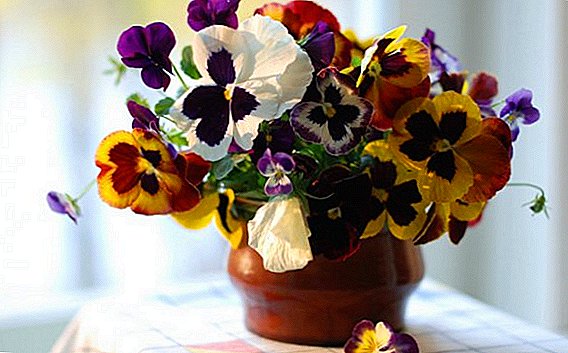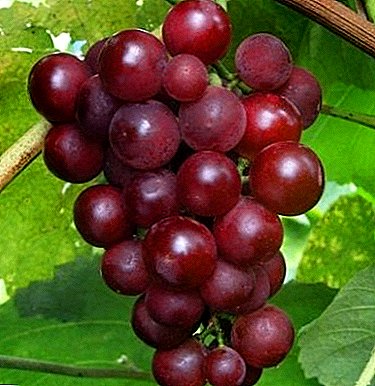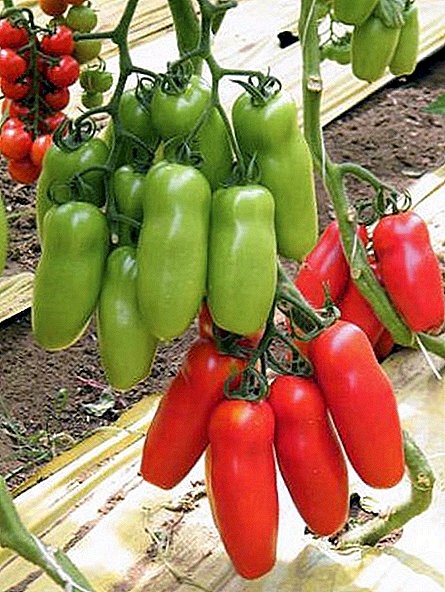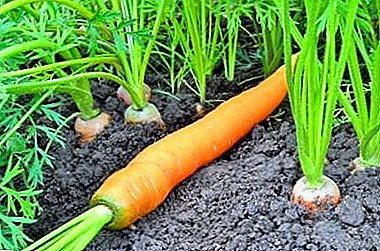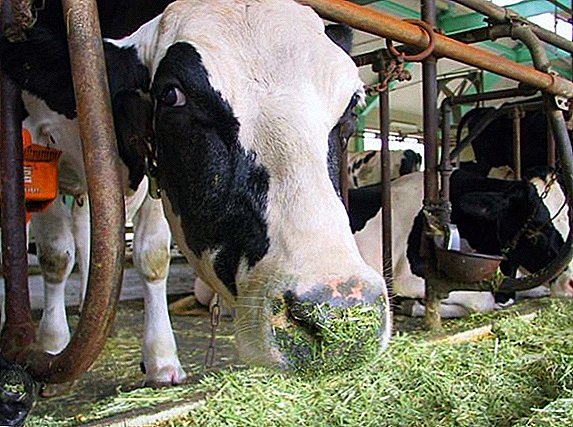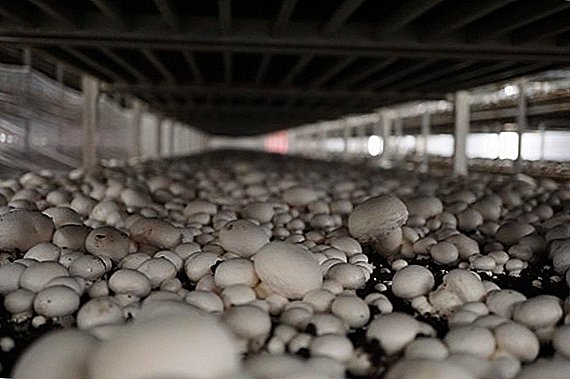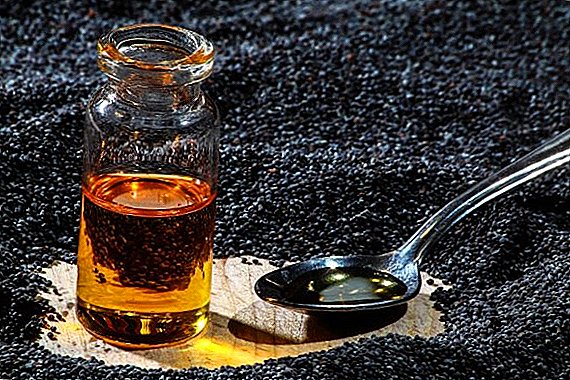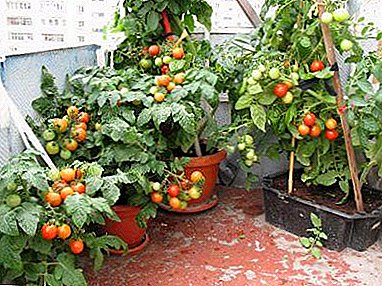
Among the many dwarf varieties of tomatoes "Balcony Miracle" has the highest decorative properties and good taste.
Its short period of growth allows you to get a good harvest both at home and when grown in the open field.
Strong, dense tomato fruits contain an increased amount of lycopene, suitable for freezing and preparing a mass of nutritious vegetable dishes.
In this article we will try to tell in detail how to grow such a sort of tomato on the balcony, we will also consider the differences of cultivation in the open field.
Description and characteristics of a variety of tomatoes
Fruits are bright red, round, glossy, the weight of 1 tomato ranges from 15 to 70 grams. Fruits contain many seeds, have fleshy aromatic pulp with a high content of pectin, dietary fiber, water, sugar, lycopene. Bush compact, standard. The central stalk is strong, up to 12 millimeters thick, firmly holds all the lash of the plant. Emerald green leaves, fragrant, segmented, have round tips. Blooming bright yellow flowers.
Inference history
 This variety was bred at the end of the 20th century by Russian and German breeders.. For this, two groups of varieties were involved: one had soft and juicy fruits with good taste, but were unstable to phytophthora, septoria and other pests.
This variety was bred at the end of the 20th century by Russian and German breeders.. For this, two groups of varieties were involved: one had soft and juicy fruits with good taste, but were unstable to phytophthora, septoria and other pests.
The second group of varieties, which included numerous German, French, and Swedish samples, had frost resistance and disease resistance, but their fruits were watery and fresh. As a result of numerous experiments over several seasons, a precocious variety suitable for domestic cultivation, with pronounced resistance and fleshy sweet fruits, was obtained.
Preparatory activities: location, lighting, temperature, humidity
- Site preparation.
For growing this variety of tomatoes in pots at home, both window sill and balcony will be suitable. Tomatoes grow equally well in wooden boxes, and in flower pots, plastic containers. Capacities for seedlings should be located on the south-east, south-west side of the house separately from other pot plants.
- Lighting.
The plant is light-requiring and should be covered most of the day (6-8 hours). In case of insufficient lighting it is recommended to use fluorescent lamps.
- Temperature.
The optimum temperature for seed germination is 18-20 degrees, for further growth - 15-25 degrees.
- Humidity.
The air should not be too dry, the optimal rate - 40-70%.
- Sowing time.
The time depends on when it is necessary to harvest, and on the length of daylight in the region. If it is planned to harvest tomatoes in April-May, seeds are sown in late December or early January. If the crop will be harvested in October-November, the seeds are sown in mid-August. If the daylight hours in this area are short, they sow for two weeks earlier than the aforementioned dates.
- Landing tanks.
Pot: no more than 10-12 liters in volume, material - plastic, a form - rectangular or round. The height of the pot should not be more than 30-35 centimeters, otherwise the plant will give a lot of foliage.
Box for seedlings: size 30 to 40 centimeters, material - wood, plastic, rectangular shape, square. The height of the box should not be more than 30-35 centimeters. All seedling containers must have pallets.
Growing seedlings at home
Next, tell about how to grow tomatoes at home: on the windowsill or on the balcony.
Seed selection
Before planting, it is recommended to check the seeds for germination., carry out decontamination and soaking.
- Seeds are dipped in a glass jar and poured with a weak solution of potassium permanganate (1: 5000) for 15-30 minutes.
- Floated seeds are removed (they are empty).
- After the procedure, the seeds are washed with water and soaked, or placed on wet gauze for a day, keeping the water temperature at 18-22 degrees.
Proper soil preparation
 The soil for sowing should be loose and well drained. The use of manure, loamy or sandy soils is not allowed. It is not recommended to use standard primer for home colors.. Ready-made soil for tomatoes is suitable for planting; you can also prepare the soil yourself according to the following scheme:
The soil for sowing should be loose and well drained. The use of manure, loamy or sandy soils is not allowed. It is not recommended to use standard primer for home colors.. Ready-made soil for tomatoes is suitable for planting; you can also prepare the soil yourself according to the following scheme:
- 50% of humus;
- 45% black soil;
- superphosphate - 30-40 grams;
- wood ash - 100-200 grams;
- urea - 10 grams;
- mineral fertilizers based on potassium - 40 grams.
If the soil is taken from the garden, it is decontaminated by placing it in a heated oven or microwave for 1 minute for half an hour.
Sowing seeds
Many are interested in how to properly plant tomato seeds at home. Seeds are sown in plastic cups in moist soil at a depth of not more than 1.0-1.5 cm, then sprinkled with earth (can be mixed with humus in the ratio 1: 1) and closed with a film to create a mini-greenhouse. Planting nest 2-3 seeds in one glass.
Care
- After emergence of shoots the film is required to be removed.
- Weaker shoots are removed, leaving 1 sprout.
- After this, the containers are transferred to a room with a temperature of 15–25 degrees, periodically turning them with different sides towards the sun — then the shoots will grow evenly.
Watering of saplings is carried out 1 time in 7-8 days, without getting on plants. Growth of shoots on a draft is not allowed.
Landing process
Planting time of seedlings: not earlier than the stalks of seedlings reached a height of 15 centimeters (in 20-25 days).
Planting procedure: prepare a new ground. The soil should be loose and fertile., it is allowed to use the ground from the beds during the pretreatment with ashes, also use purchased soil or manually prepared (you can repeat the method of soil preparation for planting seeds). Acidified soil is not used. If the medium is slightly acidic, 50 grams of wood ash is added to it.
- Before planting, the seedlings are carefully removed from the cups and watered with warm water to remove excess soil.
- Fertilizers are applied to the soil.
- After that, seedlings are planted to a depth of no more than 10-12 centimeters.
- Sprinkle with earth and lightly tamp.
Step-by-step care instructions
Watering and fertilizer
 Watering plants with tap water is not allowed.. Also do not use cold or hot water (less than 18 or more than 35 degrees). Before watering, you need to check the water temperature with a thermometer (the optimum temperature is 18-25 degrees).
Watering plants with tap water is not allowed.. Also do not use cold or hot water (less than 18 or more than 35 degrees). Before watering, you need to check the water temperature with a thermometer (the optimum temperature is 18-25 degrees).
Water for irrigation must be prepared in advance - 2-3 days before irrigation, water is collected in a tank and defended. Tomato fertilizer is carried out at least 3 times during the growing season, the first time - after the emergence of shoots, the second - during flowering, the second time - in the period of fruit set or a week before planting in a permanent place.
Potassium, phosphoric mineral fertilizers are used as fertilizers.. Recommended scheme: 5 grams of superphosphate, 1 gram of urea, 1 gram of potassium sulfate per 1 liter of distilled water. You can use ready-made fertilizers for tomatoes - "Tsitovid", "Epin".
Trimming and Pinching
To improve the quantity and quality of fruit, the plant needs pinching. The procedure should be carried out when the plant reaches a height of at least 15 centimeters. Pinching is carried out in the upper part of the central rod, also capture large branches.
Pruning a plant is not mandatory when grown at home, but is allowed at a plant height of more than 55 centimeters, as a result of which all nutrients will begin to flow into the fruit, and not into the foliage. It is necessary to pick extra flowers from the bush so that the fruits are large and sweet.. The plant does not need to be staved.
Props and hanging
When grown at home, tomatoes can not be hung. Tie them also should not be, because the stem of the plant is strong and durable, well-kept the whole bush. If the pinching was not carried out, it is allowed to hang the upper branches.
Ventilation
It is a necessary procedure that influences pollination and fruit set. During flowering, it is recommended to air the room at least 6 times a day. for 15-20 minutes, and periodically shake the bushes.
Fruits: how much and when to expect?
The growing season ranges from 75 to 92 days depending on the lighting and care. Productivity makes up to 2 kilograms from 1 bush.
Features and differences of cultivation in open ground
We have already described how to grow tomatoes on the window or on the balcony, now let's talk about the features of their cultivation in the open field. When growing tomatoes of this variety in open soil, the following features are observed and differences:
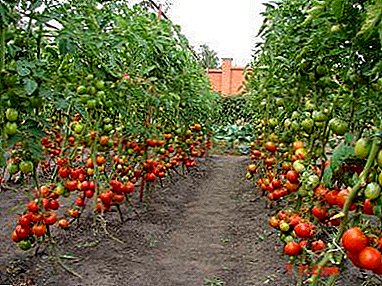 Since the open ground is more enriched with nutrients, fertilizing is carried out less frequently and in smaller quantities than when grown at home. The optimal amount is 2 times during flowering and fruit set. Natural fertilizers are mainly used (humus, banana peel, wood ash at the rate of 150-200 grams of fertilizer per square meter).
Since the open ground is more enriched with nutrients, fertilizing is carried out less frequently and in smaller quantities than when grown at home. The optimal amount is 2 times during flowering and fruit set. Natural fertilizers are mainly used (humus, banana peel, wood ash at the rate of 150-200 grams of fertilizer per square meter).- Mandatory pruning is carried out, otherwise the plant will give a tall thick rod with a small amount of fruit.
- A plant is tied up with thick ropes to metal or plastic arches, if not trimmed. You can use the trellis with rows of wire to which bushes will be attached.
- Wooden sticks or ladders are also supported if the height of the stem exceeds 60 centimeters.
- Watering is done more often, 1 every 3-4 days depending on the air temperature, after watering the soil is loosened.
- Do not use nitrogen fertilizers, otherwise the plant will not bear fruit.
This variety has many uses, including freezing, which makes it the most preferred for use in the cold season.


 Since the open ground is more enriched with nutrients, fertilizing is carried out less frequently and in smaller quantities than when grown at home. The optimal amount is 2 times during flowering and fruit set. Natural fertilizers are mainly used (humus, banana peel, wood ash at the rate of 150-200 grams of fertilizer per square meter).
Since the open ground is more enriched with nutrients, fertilizing is carried out less frequently and in smaller quantities than when grown at home. The optimal amount is 2 times during flowering and fruit set. Natural fertilizers are mainly used (humus, banana peel, wood ash at the rate of 150-200 grams of fertilizer per square meter).
